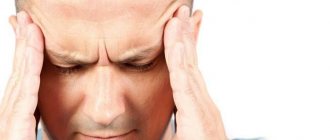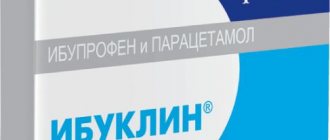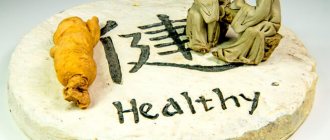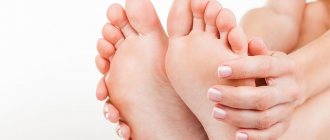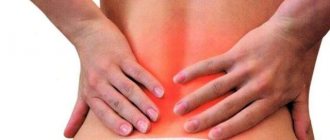Aspirin is the colloquial name for acetylsalicylic acid. Today this drug is included in the list of essential medicines of the World Health Organization (WHO) and in the list of vital and essential medicines in Russia.
But in the pre-aspirin era, most diseases had no treatment and were often referred to in one word - “fever”, and only not always effective and far from fast-acting herbal decoctions and expensive opiates could alleviate suffering and relieve pain.
willow bark
Only at the end of the 18th century was salicin discovered - the element responsible for the therapeutic effects of willow bark decoction, which had a powerful antipyretic effect. But salicin was also expensive due to the complexity of production, and salicylic acid worked worse and had a strong side effect - it destroyed the patient’s gastrointestinal tract.
Article on the topic
Without pills: unusual remedies for pain Thus, scientists were faced with the task of creating a universal remedy for fever and pain, the cost of which would be affordable for many.
Acetylsalicylic acid was first synthesized by the French scientist Charles Frederic Gerard in 1853, using the same willow tree bark as the basis. But acetylsalicylic acid in a form suitable for medical use was created in Bayer laboratories. On August 10, 1897, the German chemist Felix Hoffmann informed his colleagues - Arthur Eichengrün , Dr. Karl Duisberg and Professor Heinrich Dreser , who headed the company's research department - that he had succeeded in obtaining acetylsalicylic acid.
Clinical trials lasted a year and a half. In fact, aspirin became an official trademark of Bayer on March 6, 1899.
According to the laws of the German Empire at the time, chemical compounds were not subject to patenting, but a unique trademark could be registered. Therefore, the word “aspirin” was invented to name the new drug. "A" was taken from "acetyl", "spir" from the Latin name for the herb meadowsweet - spirea, rich in salicin, "in" - as a typical ending for a word denoting a drug. At first, aspirin was sold in powder form, and since 1904 - in tablet form, and since 1915 - without a prescription. Aspirin, being inexpensive, effective and relatively harmless, quickly became the most popular painkiller.
Interesting facts about aspirin
Among medical synthetic drugs, there is no drug more famous and in demand than aspirin. Everyone knows this drug and has used it at least once in their life. The emergence of hundreds of new drugs has not changed the fact that aspirin is a popular medicine and is sold in every pharmacy.
This wonderful medicine, which has many indications for use, was first invented in the laboratories of Leverkusen in 1897 in Wuppertal. Which of the laboratory chemists was the first to receive aspirin remains unknown: the workers argued with each other for half a century, but did not clarify this issue until their death. Arthur Eichengrün died 3 years later than his colleague Felix Hoffmann. Therefore, historical sources call Arthur the inventor of aspirin.
But many sources indicate that Hoffmann invented aspirin. But Bayer did not want to glorify Eichengrün. The scientist was planning to leave the company, which he subsequently did, so they did not want to give him the title of inventor. And after the Nazis came to power, glorifying the Jew Eichengrün was out of the question.
Both scientists contributed to the creation of the drug, and therefore deserve worldwide recognition.
Stories and destinies
Until the 1930s, it was believed that great medicine was the fruit of the collective work of “Bayer specialists.” But historical justice is that Felix Hoffmann’s discovery was based on the work of predecessor scientists - the Frenchman Charles Gerhardt and the Englishman Alder Wright . After the triumphant discovery of aspirin, Hoffman worked for Bayer all his life. The fate of his boss Heinrich Dreser was sadder.
Article on the topic
What not to take with a pill While working on the process of converting salicylic acid into acetylsalicylic acid, Hoffmann conducts experiments on the acylation of morphine, resulting in medicinal heroin. It was intended to be used as a strong pain reliever, but the side effects of heroin use became immediately apparent. Despite this, it was Heinrich Dreser who became the first official heroin addict, popularizer of the new drug and its first victim: he died of cardiac arrest in 1924.
Arthur Eichengrün went to a concentration camp in 1944, and 5 years later, before his death, he published an article dedicated to the 50th anniversary of aspirin, in which he attributed the invention of aspirin to himself. The debate about who exactly was the real inventor of aspirin did not subside for a long time after the publication of this article.
What is aspirin?
Aspirin is a non-steroidal anti-inflammatory drug (NSAID), meaning it does not contain steroids, which often cause a variety of side effects in people but still provide good results.
Aspirin is used for mild pain, mild to moderate inflammation, and increased body temperature. This drug is not a narcotic and is not addictive.
From fever and pain, for the heart and for children
Initially, only the antipyretic effect of aspirin was known, but later its analgesic and anti-inflammatory properties were discovered. After World War II, Californian physician Lawrence Craven experimentally discovered that aspirin significantly reduced the risk of heart disease. Today, most aspirin is used for precisely this purpose - to prevent cardiovascular diseases.
Article on the topic
Pharmacy of the last century. Why are we treated with useless pills? In 1952, a gentle concentration of baby aspirin was introduced, and in 1969, aspirin tablets were included in the first aid kits of the Apollo astronauts.
Research activity around the properties of aspirin continues to this day. Thus, according to research by Professor Peter Rothwell from the University of Oxford, regular intake of acetylsalicylic acid reduces the 20-year risk of developing prostate cancer by 10%, lung cancer by 30%, intestinal cancer by 40%, and cancer of the esophagus and throat by 60%. .
According to researchers from the University of Alabama (USA) and the University of Ottawa (Canada), aspirin also reduces the risk of developing liver cancer. Those subjects who took aspirin for 10 years were less likely to suffer from hepatocellular carcinoma and were 45% less likely to die from chronic liver disease.
Scientists from the University of Western Australia in Perth say aspirin helps older people fight depression. And Dutch specialists from the Institute of Neuroscience and the Academic Medical Center have found that taking aspirin daily to prevent heart disease is fraught with vision loss for older people. The risk is doubled compared to those who do not take aspirin. But the benefits of aspirin in preventing heart disease are considered more significant than the harm it causes to the eyes.
Side effects
Side effects:
- hypersensitivity reactions ( skin rashes , bronchospasm );
- decreased platelet in the blood;
- stomach pain.
Frequent and long-term use of ASA in some cases may be accompanied by the development of bleeding from the gastrointestinal tract, the signs of which are:
- tarry stools;
- anemia;
- general weakness;
- persistent abdominal pain.
The appearance of such symptoms requires stopping taking Aspirin and immediately contacting a doctor.
Long-term treatment with high doses of ASA can also provoke:
- damage to the juxtaglomerular apparatus (periglomerular complex) of the kidneys;
- formation of oxalate and/or urate stones in the urinary tract and kidneys;
- renal failure;
- damage to the pancreas insular apparatus;
- disruption of glycogen synthesis (in some cases, even leading to the development of diabetes mellitus );
- thrombocytosis;
- myocardial dystrophy;
- hemolytic anemia, erythrocytopenia, hyperprothrombinemia, neutrophilic leukocytosis;
- decreased capillary permeability (possibly increased blood pressure and deterioration of tissue trophism);
- hemolysis of erythrocytes (in patients with G6PD deficiency);
- violation of copper and zinc metabolism;
- dysbacteriosis of the oral cavity.
Instructions for use
Today, aspirin is used as an antipyretic and analgesic, as a means of preventing heart attacks and thrombosis, in the complex treatment of certain diseases, for example in gynecology. Aspirin is widely used to combat hangover symptoms. Safe daily dose of aspirin: 4 g per day. You can take the drug only after meals and wash it down with enough water.
But aspirin should never be used uncontrolled and without a doctor’s prescription. An overdose leads to severe pathologies of the kidneys, brain, lungs and liver; the first symptoms of an overdose are sweating, tinnitus and hearing loss, swelling, skin and other allergic reactions. Taking aspirin daily can cause gastrointestinal or even cerebral bleeding.
Pharmacodynamics and pharmacokinetics
What is Aspirin?
The active substance of the drug - acetylsalicylic acid (sometimes mistakenly called “acetylic acid”) - belongs to the group of non-steroidal anti-inflammatory drugs , the mechanism of action of which is realized through the irreversible inactivation of the COX enzyme, which plays an important role in the synthesis of thromboxanes and Pg.
Thus, to the question acetylsalicylic acid is aspirin or not, we can confidently answer that Aspirin and acetylsalicylic acid are the same thing.
Natural source of Aspirin: Salix alba (white willow) bark.
Chemical formula of Aspirin: C₉H₈O₄.
Pharmacodynamics
Oral administration of ASA in a dose of 300 mg to 1 g helps relieve pain (including muscle and joint pain) and conditions that are accompanied by mild fever (for example, colds or flu). Similar doses of ASA are prescribed for temperature.
The properties of ASA make it possible to use the drug also in acute and chronic inflammatory diseases . The list of indications for which Aspirin helps includes osteoarthritis , rheumatoid arthritis , and ankylosing spondylitis .
For these diseases, as a rule, higher doses are used than, for example, for fever or colds. To alleviate the condition, an adult, depending on the characteristics of the course of the disease, is prescribed from 4 to 8 g of ASA per day.
By blocking the synthesis of thromboxane A2, ASA inhibits platelet . This makes it advisable to use it for a large number of vascular diseases. The daily dose for this type of pathology varies from 75 to 300 mg.
Pharmacokinetics
After taking an Aspirin tablet, ASA is quickly and completely absorbed from the gastrointestinal tract. During and after absorption, it is biotransformed into salicylic acid (SA), the main, pharmacologically active metabolite .
TSmax ASA - 10-20 minutes, salicylates - from 20 minutes to 2 hours. ASA and SA are completely bound to plasma proteins in the blood and are quickly distributed in the body. SA crosses the placenta and enters breast milk.
in the metabolism of SC. The products of metabolism of the substance are: gentisic, gentisin-uric, salicylic uric acids, as well as salicylacyl and salicylphenol glucuronides.
The kinetics of SA elimination is dose dependent, since metabolism is limited by the activity of liver enzymes . T1/2 is also a dose-dependent value: in the case of low doses, T1/2 is from 2 to 3 hours, in the case of high doses it increases to 15 hours.
SA and its metabolic products are excreted mainly by the kidneys.
Interaction
ASA enhances the effects of non-steroidal anti-inflammatory drugs (for this reason, doctors do not recommend taking Aspirin with other drugs in this group, for example, simultaneously with Paracetamol ), non-narcotic analgesics , oral hypoglycemic drugs , indirect anticoagulants , Heparin , thrombolytics that suppress platelet aggregation, triiodothyronine , sulfonamides .
Reduces the effects of diuretics , uricosuric drugs , antihypertensive drugs .
GCS, alcohol and drugs containing ethanol enhance the damaging effect of ASA on the mucous membrane of the digestive canal, increasing the risk of developing gastric and intestinal bleeding.
ASA increases the plasma concentration of Li drugs, barbiturates and digoxin .
Absorption of ASA worsens and slows down when taking the drug simultaneously with antacids containing Al and/or Mg hydroxide.
Aspirin price, how much tablets cost
The price of Aspirin 500 mg No. 10 in Russia is 225 rubles. Price of Aspirin Cardio 300 mg No. 20 - from 80 rubles, 100 mg No. 28 - from 130 rubles. You can buy effervescent Aspirin Bayer for an average of 200 rubles. (price for 10 tablets), Upsarin UPSA - from 170 rubles. for 16 tablets.
The cost of the drug Thrombo Ass is from 45 rubles.
- Online pharmacies in RussiaRussia
- Online pharmacies in UkraineUkraine
- Online pharmacies in KazakhstanKazakhstan
LuxPharma* special offer
- Agrenox, analogue (Arreno) (Acetylsalic acid - Aspirin plus Dipyridamole) capsules No. 30
RUR 1,470 order
ZdravCity
- Aspirin with spike tablets. 10 pcs. Bayer Bitterfeld GmbH
RUB 289 order
- Aspirin complex por. thorn. 10pcs Kern Pharma SL
RUR 497 order
- Aspirin cardio tab. p/o ksh/sol. 100mg 98pcs Bayer Bitterfeld GmbH
RUB 328 order
Pharmacy Dialogue
- Aspirin Complex (pack 3.5475g No. 10)Kern Pharma
500 rub. order
- Aspirin Bayer effervescent tablets No. 10 with vitamin C Bayer
RUB 296 order
- Aspirin Express (tab. spike. 500 mg No. 12) Bayer Bitterfeld GmbH
280 rub. order
- Aspirin Cardio tablets 100 mg No. 28Bayer
96 RUR order
- Aspirin Cardio (tablet p/o 300 mg No. 20) Bayer
84 rub. order
show more
Pharmacy24
- Aspirin C No. 10 effervescent tablets Bayer Bitterfeld GmbH, Nimechchina
68 UAH. order - Aspirin Cardio 100 mg No. 56 tablets Bayer Pharma AG, Nimecchina / Bayer Bitterfeld GmbH, Nimecchina
93 UAH order
- Acetylsalicylic acid (Aspirin) 500 mg No. 10 tablets PAT "Kievmedpreparat", Ukraine/PAT "Galichfarm", Ukraine
7 UAH order
- Acetylsalicylic acid (Aspirin) 500 mg No. 10 tablets PAT "Lubnipharm", Ukraine
3 UAH order
- Aspirin 500 mg N10 tablets Bayer Bitterfeld GmbH, Nimechchina
39 UAH order
PaniPharmacy
- Aspirin cardio tablets Aspirin cardio tablets 300 mg No. 28 Germany, Bayer Bitterfeld
92 UAH order
- Aspirin tablets Aspirin tablets 500 mg No. 10 Germany, Bayer Bitterfeld
41 UAH order
- Aspirin cardio tablets Aspirin cardio tablets 100 mg No. 28 Germany, Bayer Bitterfeld
61 UAH order
- Aspirin tablets Aspirin tablets. 500 mg No. 20 Germany, Bayer Bitterfeld
73 UAH order
- Aspirin cardio tablets Aspirin cardio tablets 100 mg No. 56 Germany, Bayer Bitterfeld
99 UAH order
show more
